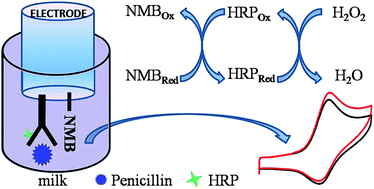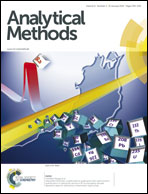Amperometric immunosensor based on covalent immobilization of new methylene blue and penicillin polyclonal antibody for determination of penicillin G in milk
Abstract
A novel amperometric immunosensor for the detection of penicillin G (PeG) in milk was developed by covalent immobilization of new methylene blue (NMB) and Horseradish peroxidase-labeled penicillin polyclonal antibody (HRP-PePAb) on a glassy carbon electrode (GCE). The results of cyclic voltammetry and impedance spectroscopy showed that the NMB on the GCE exhibited excellent electrochemical activity and enhanced electron transfer. HRP labeled on PePAb shows remarkable electrocatalytic activity and good reproducibility towards the reduction of hydrogen peroxide due to the advantages of high electron transfer kinetics. Based on the specificity of the immunoreaction of antigen and antibody, the presented immunosensor exhibits high sensitivity, long-term stability, wide linear range, and low detection limit for the detection of PeG in milk. The linear response to PeG in the range of 5.20–41.6 nmol L−1 was obtained with the detection limit of 1.82 nmol L−1. Therefore, the proposed immunosensor can well be used to determine PeG residues in milk.


 Please wait while we load your content...
Please wait while we load your content...